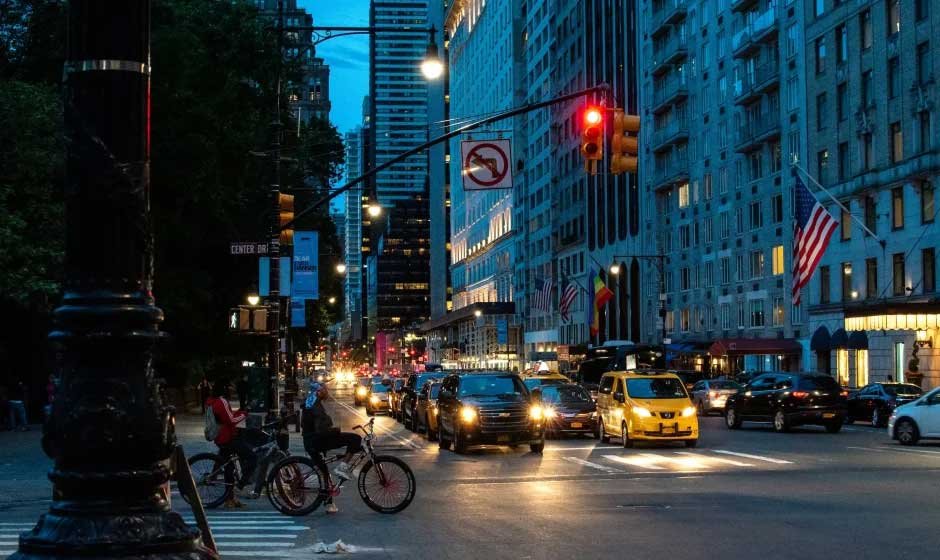Skip to the good bit
ToggleBoulder’s scenic roads and bustling streets are part of its charm, but certain intersections are known for frequent motor vehicle accidents. Heavy traffic, unclear signage, and risky driving behaviors can turn these areas into accident hotspots. These high-risk locations often lead to serious injuries, property damage, and significant delays for commuters.
Identifying Boulder’s most dangerous intersections and understanding the factors contributing to accidents in these areas is essential for drivers. Increased awareness can help residents and visitors navigate the city safely while reducing the likelihood of crashes. For those affected, seeking guidance from a Centennial car accident lawyer can provide valuable support in addressing the legal and financial repercussions of such incidents.
The Risks Associated with High-Traffic Intersections
High-traffic intersections are particularly prone to motor vehicle accidents due to the sheer volume of vehicles passing through them daily. These areas often experience congestion during peak hours, increasing the likelihood of rear-end collisions, sideswipes, and even multi-vehicle crashes. Drivers in a rush or distracted behind the wheel add to the danger. Traffic bottlenecks and confusion over right-of-way rules further exacerbate the risk, especially for less familiar drivers.
Proper lane discipline, attention to traffic signals, and maintaining a safe following distance are crucial for navigating high-traffic intersections safely. Local authorities can improve safety through better traffic flow management, such as synchronizing signals and installing advanced warning signs. When combined with driver caution, these measures create a safer commuting environment for all.
Left-Turn Accidents: A Common Occurrence
Left-turn maneuvers at busy intersections are one of the leading causes of accidents in Boulder. Drivers often misjudge the speed or distance of oncoming traffic, resulting in collisions. The absence of dedicated left-turn signals at some intersections compounds the problem, as drivers are forced to navigate through gaps in traffic, increasing the chance of a miscalculation. Impatience during heavy traffic or risky decisions to beat a light further increases the likelihood of crashes.
To reduce the risks, drivers should exercise patience and avoid rushing through turns, especially when visibility is limited. Installing more protected left-turn signals at high-risk intersections can also help mitigate this issue. These improvements not only reduce accidents but also improve overall traffic efficiency, ensuring smoother and safer navigation for everyone.
Intersections with Poor Visibility
Intersections with limited visibility, such as those obscured by buildings, trees, or parked vehicles, pose a unique danger to drivers. Poor visibility makes it harder to see approaching vehicles, cyclists, or pedestrians, leading to an increased likelihood of accidents. This is particularly problematic in neighborhoods where intersections are surrounded by dense landscaping or commercial properties with limited sightlines.
Drivers should slow down and proceed cautiously when approaching intersections with obstructed views. Proper urban planning, including trimming foliage, placing mirrors, or adding warning signs, can enhance visibility and safety at these locations. Encouraging property owners to maintain clear sightlines can also make a significant difference in reducing the risk of accidents.
Distracted Driving at Boulder’s Intersections
Distracted driving is a major contributing factor to accidents at Boulder’s intersections. Activities like texting, adjusting GPS devices, or eating while driving reduce reaction times and divert attention from the road. Drivers engaged in these distractions are more likely to miss signals or fail to notice pedestrians and cyclists, leading to collisions that could have been prevented with greater focus.
Public awareness campaigns and stricter enforcement of distracted driving laws can reduce these incidents. Drivers should focus entirely on the road and avoid multitasking to ensure they remain vigilant, especially in areas known for frequent accidents. Practicing mindfulness behind the wheel and using hands-free devices can further contribute to safer driving habits in Boulder.
The Role of Pedestrian and Cyclist Traffic
Boulder is known for its vibrant outdoor culture, which includes heavy pedestrian and cyclist traffic. Intersections with inadequate crosswalks or bike lanes see a higher number of vehicle-cyclist or vehicle-pedestrian accidents. Drivers failing to yield or pedestrians crossing unexpectedly add to the danger, particularly during peak commuting hours when traffic congestion is at its highest.
Improved infrastructure, such as clearly marked crosswalks, dedicated bike lanes, and pedestrian signals, can make these intersections safer. Drivers should also remain alert to non-motorized traffic and always yield to pedestrians in designated areas to prevent accidents. Public education campaigns encouraging mutual respect between drivers and non-motorized road users can foster a safer environment for everyone.
Weather Conditions and Intersection Safety
Boulder’s weather conditions, such as snow, rain, or fog, can make intersections even more dangerous. Slippery roads, poor visibility, and slower reaction times during inclement weather contribute to accidents. These conditions amplify existing risks, especially in intersections with sharp turns or steep gradients where braking distance is already limited.
Drivers should adapt their speed and maintain a greater following distance in poor weather conditions. Regular road maintenance, such as salting icy surfaces and ensuring proper drainage, can also minimize the risks during adverse weather. Preparing vehicles with appropriate tires and ensuring wiper blades are functional can further enhance safety during Boulder’s unpredictable weather events.
Dangerous Intersections: Known Hotspots in Boulder
Boulder’s busy streets host several intersections notorious for frequent accidents. These areas are often marked by a combination of heavy traffic and diverse road users, creating a complex and risky environment.
- 28th Street and Arapahoe Avenue: Known for its high traffic volume and intricate lane configurations, this intersection is a common site for accidents involving vehicles, pedestrians, and cyclists.
- Canyon Boulevard and Broadway: This central intersection sees a mix of heavy vehicle flow and non-motorized traffic, making safe navigation particularly challenging.
Addressing these hotspots through thoughtful design changes and increased safety measures can help reduce accidents and create a safer environment for everyone.
Strategies to Stay Safe at Boulder’s Intersections
Avoiding accidents at Boulder’s intersections requires proactive measures from drivers. Staying alert, avoiding distractions, and adhering to traffic rules can significantly reduce risks. Defensive driving techniques, such as anticipating the actions of others and being prepared to react, are especially important in high-risk areas. Drivers should also ensure their vehicles are well-maintained, with functioning brakes and tires suitable for varying road conditions.
Local authorities and residents can work together to enhance intersection safety. Reporting unsafe conditions, participating in city planning discussions, and advocating for better traffic infrastructure are all steps that contribute to a safer driving environment in Boulder. Combining these efforts with individual responsibility ensures a safer experience for everyone navigating Boulder’s roads.







